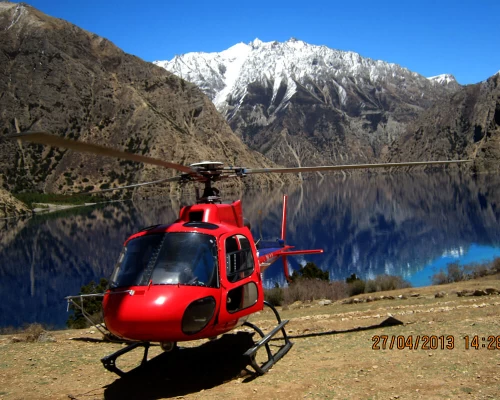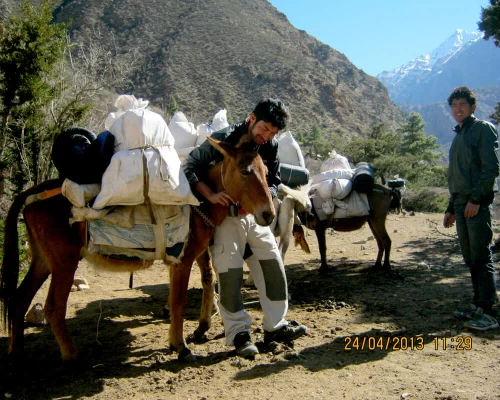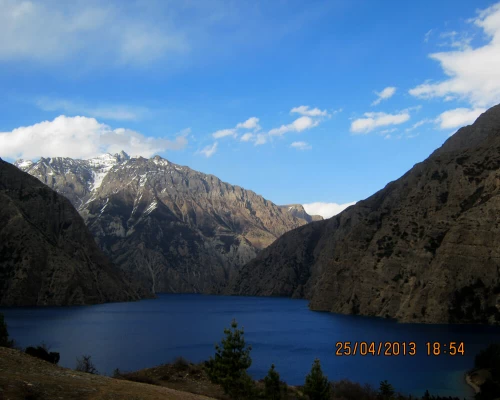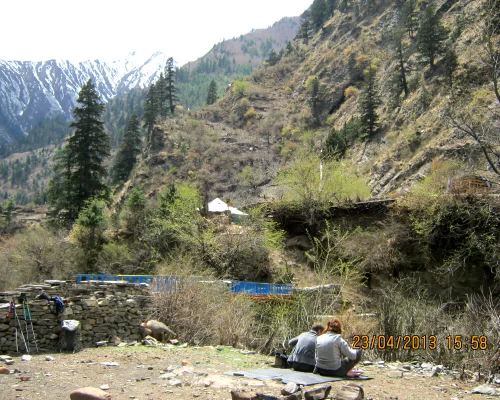The Dolpo district of Nepal is the kind of fantasy place that movies are made about. Upper Dolpo is a real-life mountain paradise. From dry, barren lands, to lush meadows, to waterfalls and sacred lakes, our Upper Dolpo Trek guides you through these mystical lands for an out-of-this-world experience. The trekking route lies in the remote northwest area of Nepal’s Himalayas. The territory is largely uninhabited, and it’s possible to go for a day or two without seeing another human. Very few tourists visit this place, let alone even know that it exists.
The residents of Upper Dolpo have origins in Tibet, with whom they have traded for hundreds of years. Local products do not provide a sufficient livelihood, hence their necessity to trade. As the highest inhabited region of Nepal, it is also the least populated, with only about 5,000 people living in the region. They follow the Bon Po religion, which uses ancient shamanistic practices with roots in Tibetan Buddhism.
The journey into Upper Dolpo Trek starts with an hour-long scenic flight from Kathmandu to Nepalgunj. We begin the actual trek on the following day, to Dunai. Immediately the stunning scenery is seen. We pass through lush forests and agricultural fields in the lowlands. As we head up and northward, the vegetation, as well as villages, become sparser. We have views of the colossal mountain Dhaulagiri (8,167 meters/26,794 feet), the 7th highest mountain in the world. Also, the Annapurna, Manaslu, and Nilgiri ranges show themselves along the trail.
The three high mountain passes, Saldang La Pass (5060m), Jayanta La Pass (5220m), and Kang La Pass (5380m) add a whole new level of exhilaration to the trek. After these passes, we get to sleep right next to the majestic Shey Phoksundo Lake. This large, turquoise-colored lake will take your breath away. You’ll never see another lake like it. Nearby is the Demon’s Trail, made famous by the movie Himalaya (Caravan) by Eric Valli. It’s a route that has been used for centuries for trade with Tibet. Shey Gompa is the primary destination of the Upper Dolpo Trek, a sacred monastery that is allegedly over 800 years old and houses ancient Tibetan scrolls.
We pass more picturesque villages and have an opportunity to see a wide range of biodiversity, including the blue sheep and snow leopards among much more. The trek ends the same way it began, with a scenic flight to Kathmandu from Nepalgunj. Come enjoy the Upper Dolpo Trek with us! You won’t believe the beauty until you see it for your own eyes!
Upper Dolpo Trek is a camping and teahouse journey, though there are opportunities to stay at guesthouses along the way. Upper Dolpo Trekking is possible throughout the year, but Spring (March to May) and Autumn (September to November) provide the best weather. Depending on the time of the year that you make the trek, teahouses may not be open. Therefore, we have listed this as a camping trek. We will give you the details before you book your trek. The Upper Dolpo Trek requires moderate fitness and little acclimatization to avoid acute mountain sickness. Breeze Adventure arranges the trek with complete management. Please, feel free to contact us for more detailed information.
Upper Dolpo Trekking is in a restricted area, meaning that you need a special permit, as well as a licensed guide to enter. The cost is $500 for the first 10 days and $50/day after that. The cost is included in the price of the package.





